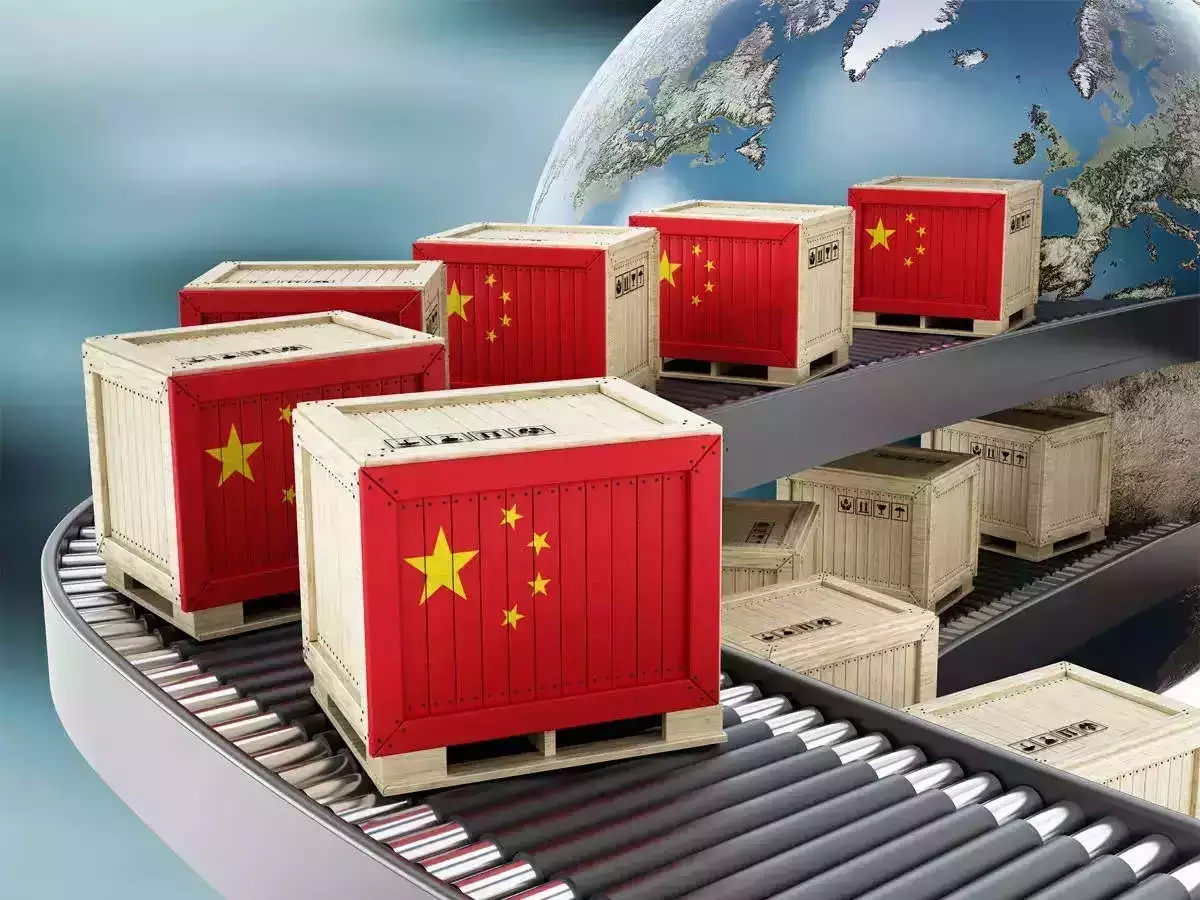
Cornered China May Flood the World
Though, President Donald Trump has paused his reciprocal tariffs on 75 countries on 8 April, 2025 less than a week after the announcement, the only exception in this pause, was China, on whom Trump has imposed 125 percent tariff, which we may call ‘penal tariff’, as China chose to retaliate the reciprocal tariffs by President Trump. Trump in his post on micro blogging platform ‘X’ said, “Based on the lack of respect that China has shown to the World’s Markets, I am hereby raising the Tariff charged to China by the United States of America to 125%, effective immediately. At some point, hopefully, in the near future, China will realize that the days of ripping off the USA and other Countries, is no longer sustainable or acceptable”.
Though, except USA, no other country has raised tariff on China, including India, but most of the countries have been wary of dumping done by China, causing home to their domestic industry. Dumping means selling goods at low prices. In international trade jargon, dumping happens, When a country or company exports a product at a lower price in the foreign market than it charges in its domestic market. Dumping is considered to be an abuse in international trade. China has mastered this art of dumping, as a weapon in international trade, aimed at killing the domestic industry of the importing countries and once any country becomes dependent on Chinese materials, exploitation starts. Case of active pharmaceutical ingredients (APIs) is a living example of Chinese dumping and exploitation. After 2004, several API’s including penicillin G and folic acids were dumped in Indian markets at ridiculously lower prices, and later when Indian industry forced to close down, due to this dumping, the game of exploitation started. China started selling the same material at 4 to 15 times higher prices. In this game it not only made Indian API industry to die, but also endangered the health security of the country.
We can say that there is nothing new in Chinese dumping, after President Trump’s reciprocal tariffs on China, the danger of Chinese dumping globally has gone manifold. The reason is that after US tariffs, it will be difficult for China to export so freely to US; therefore, China would definitely be compelled to dump their products in other markets. Firstly, China has massive excess production capacity leading to surplus production. Its inability to sell in some markets, compels China to dump the same materials in other markets. China focus has always been on export driven growth, supported by Chinese government. Secondly, Chinese companies receive subsidies and government support in other forms, enabling them to market their products at artificially low prices. There is no doubt that government subsidies distort market prices and lead to unfair competition. Thirdly, trade tensions also add to Chinese game of somehow control the alternative markets.
Fears about Chinese dumping are not without any reason. In the past, there have been instances that China practiced the unethical practice of dumping in overseas market, including India. In the past, our API industry, electronic & telecom industry, textile and garments industry, toy industry and many others have been the victim of Chinese dumping. Many of the manufacturing units in these industries faced closure due to Chinese dumping; and despite concerted efforts of the government, these industries could not have come out of the shadow of unfair competition from China. Though, government of India claims that it is keeping a close eye on emerging situations in the global markets, the industry remains wary of the possible dumping efforts by China.
It is notable that USA has been attempting to curb Chinese imports for long. However, under President Donald Trump there has been concerted efforts aimed at not leaving any chance for China to reroute its exports through other means to ditch Trump tariffs. In this context US Senate has introduced two bills, namely, Neither Permanent Nor Normal Trade Relations Act (PNTR Act) and Axing Non-Market Tariff Evasion Act (ANTE Act). The first one, that is, PNTR focuses on imports from China and second ANTE targets Chinese firms producing goods in other countries. Whereas, the PNTR Act would restrict goods coming from China directly and ANTE Act would restrict good coming from Chinese owned factories in countries such as Vietnam, Malaysia, Indonesia and Thailand. Therefore, through new legislations, US is trying to plug all possible channels through which China might try to sale their products in US. Despite different ways through which India has been trying to curb Chinese dumping, dependence on Chinese imports has been increasing unabated. In the financial year 2024-25, in the first 10 months between April and February, India's imports from China rose by 10.4 percent to US$103.7 billion, compared to the same period a year earlier. On the other hand, export to China dropped by 15.7 percent totalling US$12.7 billion. This has obviously widened trade deficit with China. It is despite long list of anti-dumping measures adopted by India on the recommendation of DGTR. Since long, imports from China have been impacting India's manufacturing journey and manufacturing, which used to provide 19.6 percent of GDP in 1990-91, contributed 14.27 percent to GDP in 2023-24. This is an alarm bell for India's growth aspirations. Now when India has been aspiring to be manufacturing hub for the world, it can ill-afford any fresh spell of dumping from China, as it may jeopardise its dream of Aatmanirbhar Bharat. We not only have to streamline our administrative machinery to stop China from using unethical and illegal methods of dumping its goods in Indian markets.
Whenever India has invoked anti-dumping duties or safeguard measures or any other means, China has tried to ditch by Product modification, where Companies modify their products slightly to fall outside the scope of the anti-dumping duties; New producers, where New Chinese producers might emerge to replace those subject to anti-dumping duties; Absorption, where Exporters might absorb the duty costs to maintain market share; Circumvention, where Companies may engage in circumvention practices, such as misdeclaring the origin or characteristics of the goods and several other means. These strategies can make it challenging for countries to effectively enforce anti-dumping measures and protect their domestic industries.


